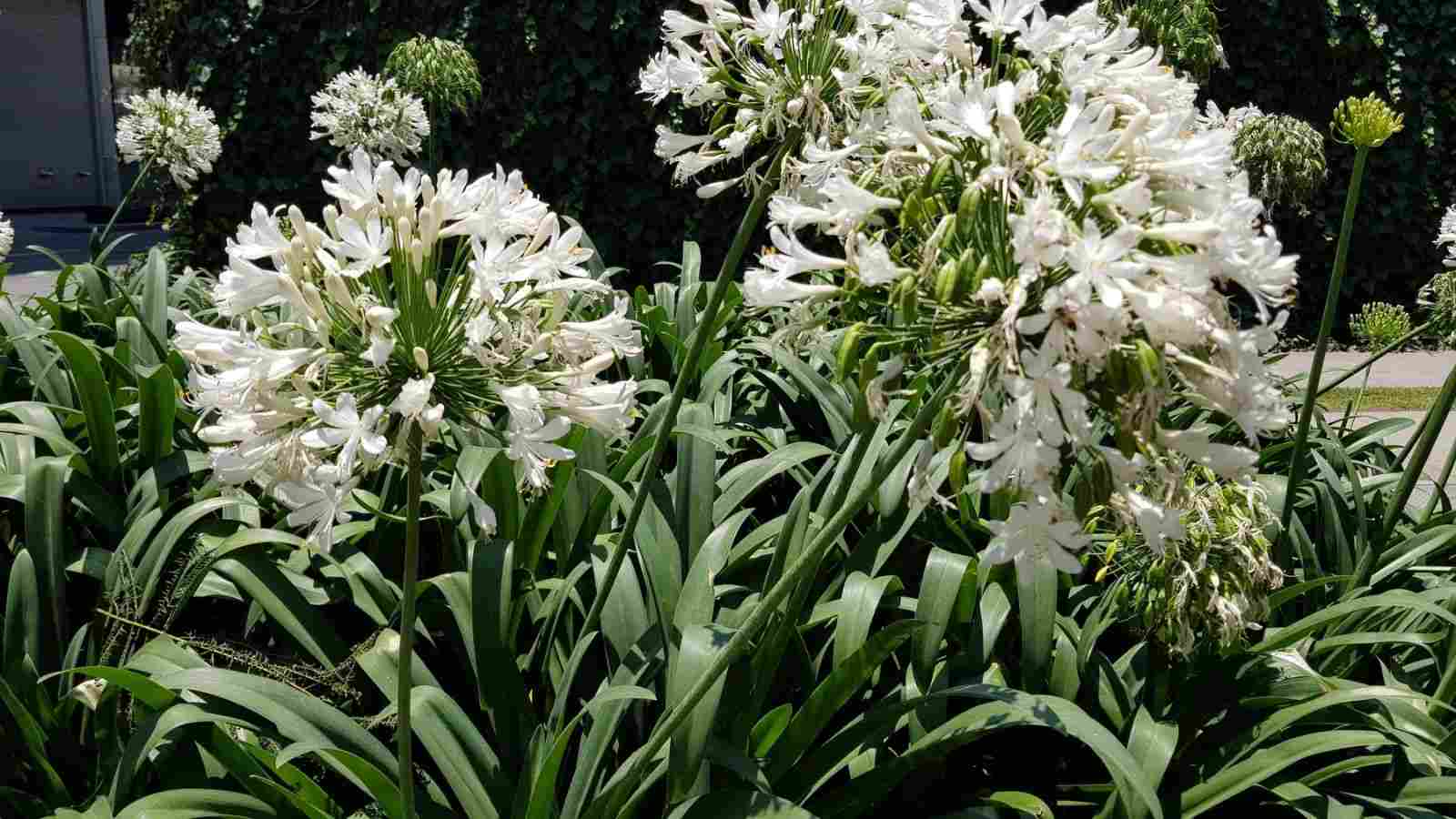[ad_1]
Agapanthus, additionally known as Lily of the Nile, is a mesmerizing addition to any yard. These vegetation originate from South Africa and are acknowledged for his or her beautiful blooms which are obtainable various colors, along with blue and white.
Their flower clusters, comprised of explicit individual tubular flowers, rise from upright clumps of strap-like leaves, making a placing seen have an effect on.
Agapanthuses are versatile vegetation, with every evergreen and deciduous varieties on the market. The evergreen varieties are notably in type in warmth climates, as they protect their foliage all 12 months lengthy.
Alternatively, deciduous varieties go dormant on the end of the rising season, shedding their leaves and getting right into a interval of rest.
These vegetation might be grown as single specimens or in clumps, counting on the required influence. They’re moreover well-suited for container planting, making them an excellent various for these with restricted yard home.
Agapanthuses normally will not be merely gorgeous, they’re moreover a haven for wildlife. Bees and butterflies are generally seen hovering spherical their blooms, making them an excellent various for these searching for to entice pollinators to their yard.
No matter their delicate look, agapanthuses are a hardy plant, in a position to withstanding a wide range of conditions. However, they do have explicit preferences with reference to their care and cultivation.
On this info, as a grasp gardener, I will share the whole thing you wish to know to develop and care for agapanthuses, from selecting the right choice to providing one of the best rising conditions.
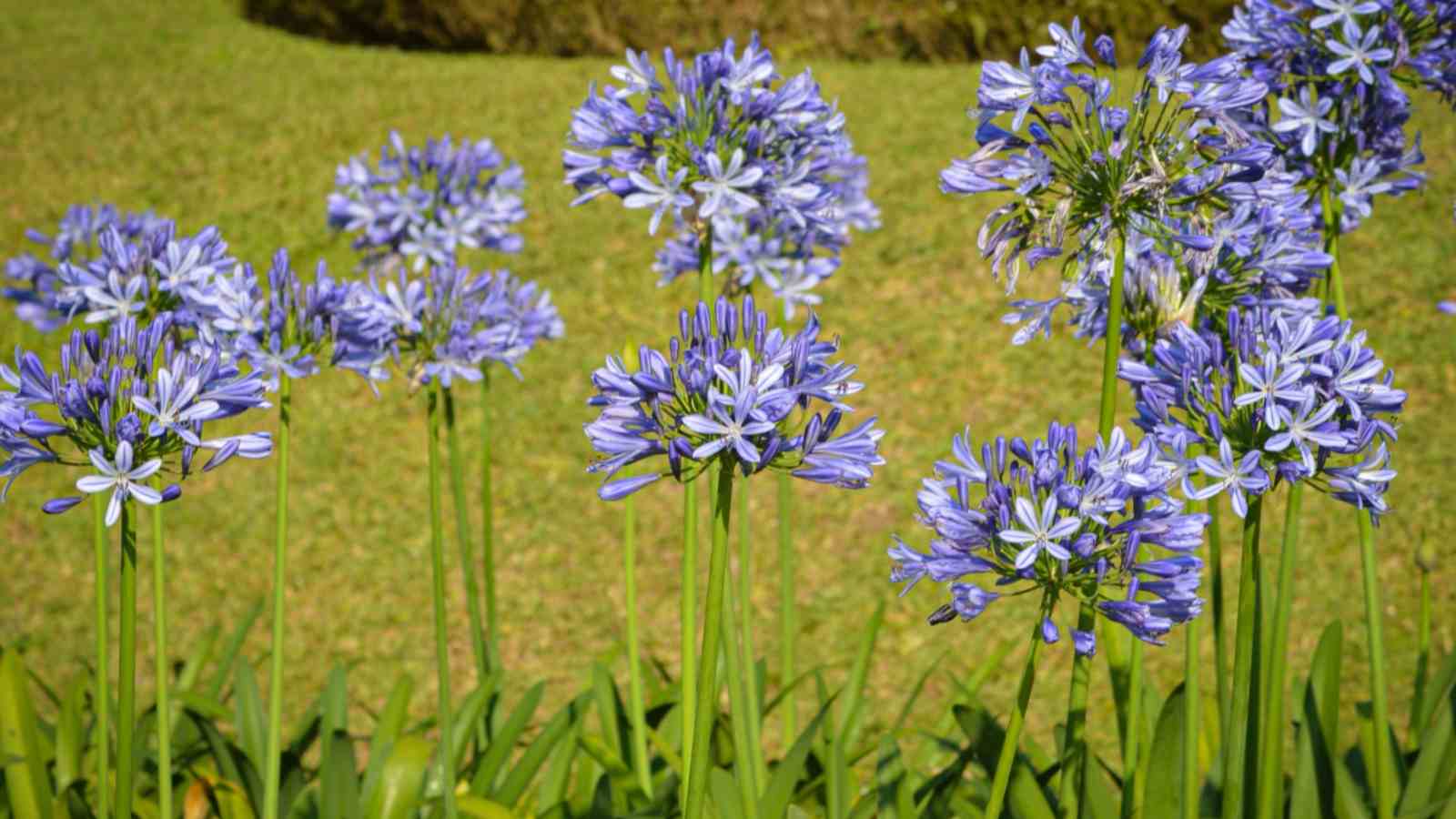
Botanical Title: Agapanthus
Frequent Title: African lily, Lily of the Nile
Family: Agapanthaceae
Plant Form: Herbaceous perennial
Hardiness Zones: 7 – 10 (USDA)
Photo voltaic Publicity: Full photo voltaic to partial shade
Soil Form: Sandy loam, well-drained
Soil pH: 5.5 – 7.5
Bloom Time: June to September
Flower Color: Blue, white, pink
Native Area: South Africa
Agapanthus Plant Care
Agapanthuses, usually typically known as Lily of the Nile, thrive in full photo voltaic to partial shade and like well-drained, sandy-loam soil with good publicity to warmth climates.
These vegetation are native to South Africa and may be present in every deciduous and evergreen varieties, with strap-like leaves and beautiful flower clusters which are obtainable blue or white.
For pot cultivation, choose a 12-inch pot with drainage holes, filled with a mixture of sand and compost to ensure appropriate drainage.
All through the rising season, current frequent water and mulch throughout the bottom to retain moisture and deter weed improvement. On the end of the rising season, place the pots in a darkish place to encourage dormancy and defend the fleshy rhizomes or tuberous roots from frost.
Agapanthuses are usually deer-resistant and entice butterflies and bees with their tubular flowers, which are actually cluster of explicit individual flowers organized in a sphere.
Light
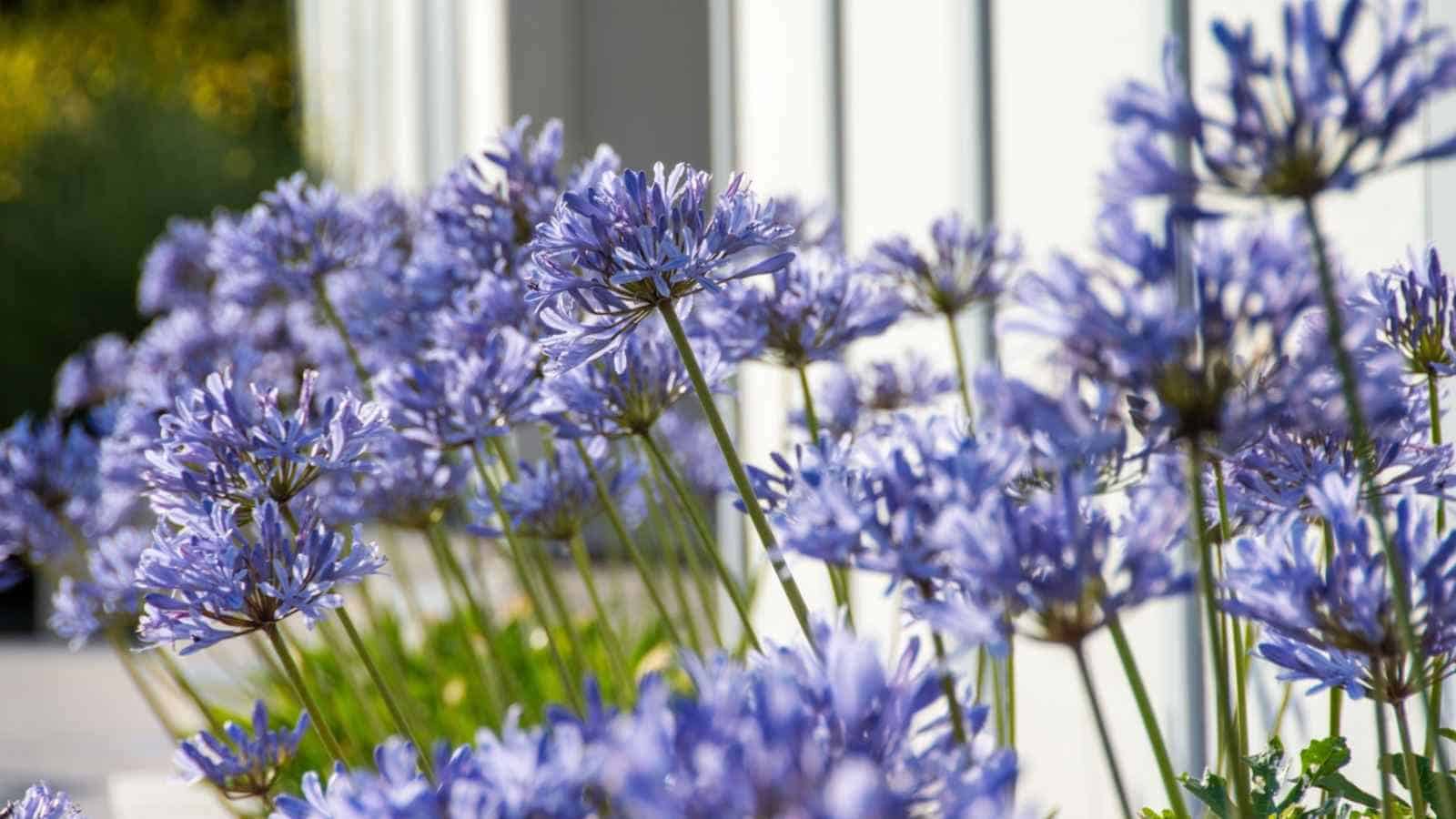
Agapanthuses are extraordinarily adaptable to mild conditions, nonetheless they actually thrive in a sunny location. Full photo voltaic publicity ensures basically essentially the most vibrant present of their placing blooms, whether or not or not they’re white, blue, and even nile in shade.
However, these vegetation can also tolerate partial shade, notably in areas with notably extreme humidity or warmth climates.
In a darkish place, much like via the end of the rising season, agapanthuses will nonetheless exhibit new improvement, nonetheless their flowering may be barely diminished.
Soil
Agapanthuses thrive best in well-drained soil, enriched with pure matter much like compost. The soil should ideally be barely acidic to promote increased improvement.
Sandy-loam can be acceptable as a result of it presents the necessary drainage for the fleshly rhizomes or tuberous roots of the plant.
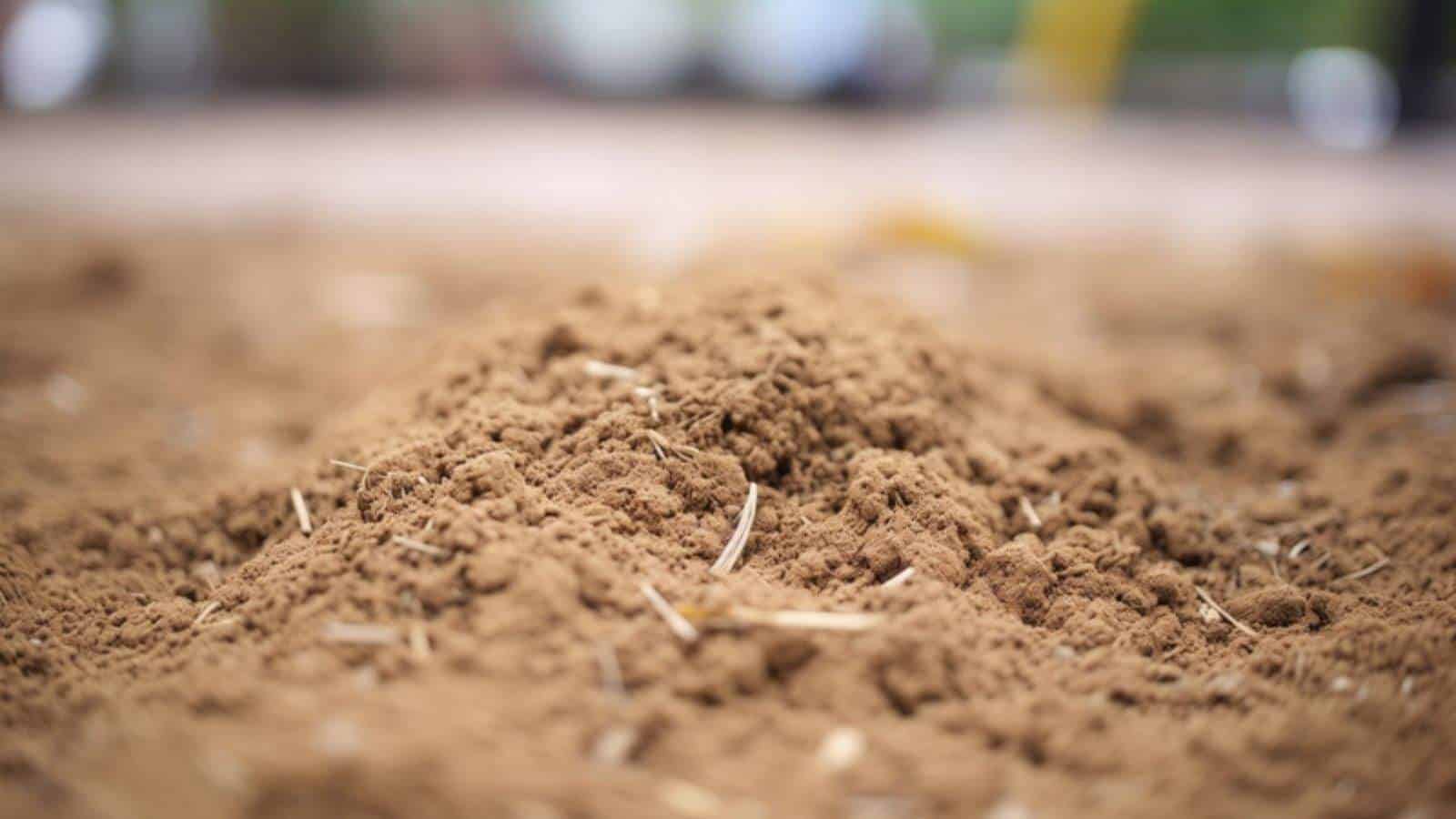
In a pot, ensure that the presence of drainage holes to cease waterlogging, which could end in root rot.
The soil should be saved moist nonetheless not waterlogged, notably in a pot, as a result of the fussy roots can shortly rot in a soggy environment.
Water
Agapanthuses are pretty resilient with reference to water requirements. They like well-drained soil, so it’s important to not overwater them, notably via the end of the rising season.
The reality is, via the chilly local weather, it’s best to place them in a darkish place with minimal watering. However, via the warmer months, notably in extreme humidity and warmth climates, they require further frequent watering.
It’s important to strike a steadiness as they don’t tolerate waterlogged conditions. The frequency of watering can also depend on the publicity of the plant, with these in full photo voltaic needing further water than these in partial shade.
Temperature and Humidity
Agapanthuses thrive best in warmth climates with full photo voltaic publicity. They are going to tolerate partial shade, nonetheless a sunny location encourages sturdy improvement and profuse blooms.
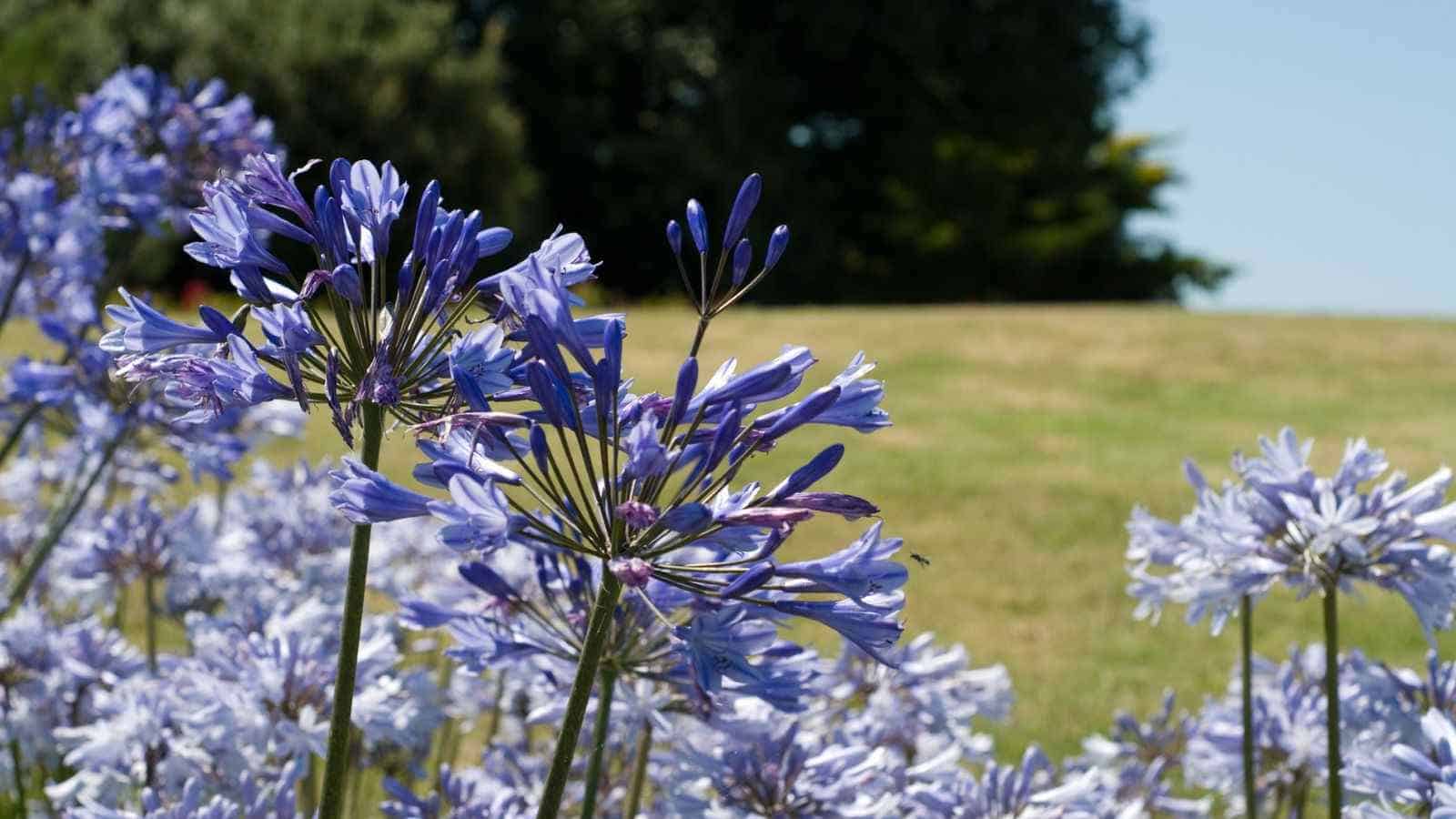
These evergreen varieties normally will not be eager on chilly local weather and frost, which could hurt their foliage and tuberous roots. Extreme humidity might be helpful, notably via the germination of newest improvement and on the end of the rising season.
However, ensure that the vegetation are in a well-drained house to cease waterlogging, as it will end in rot and completely different sicknesses.
Fertilizer
Agapanthuses normally will not be heavy feeders, nonetheless they revenue from a light-weight utility of balanced fertilizer throughout the early spring as new improvement emerges.
A well-rotted compost can perform an excellent provide of nutritional vitamins and in addition can improve the soil’s building and drainage.
For container vegetation, a slow-release fertilizer might be utilized initially of the rising season.
However, over-fertilization should be averted as it’d most likely end in excessive foliage improvement on the expense of flowers.
On the end of the rising season, a layer of mulch might be utilized to supply extra nutritional vitamins and defend the flessy rhizomes from frost in colder climates.
Pruning
Agapanthuses, native to South Africa, usually require minimal pruning. On the end of the rising season, after the ultimate blooms have mild, you presumably can within the discount of the flower stems to the underside of the plant.
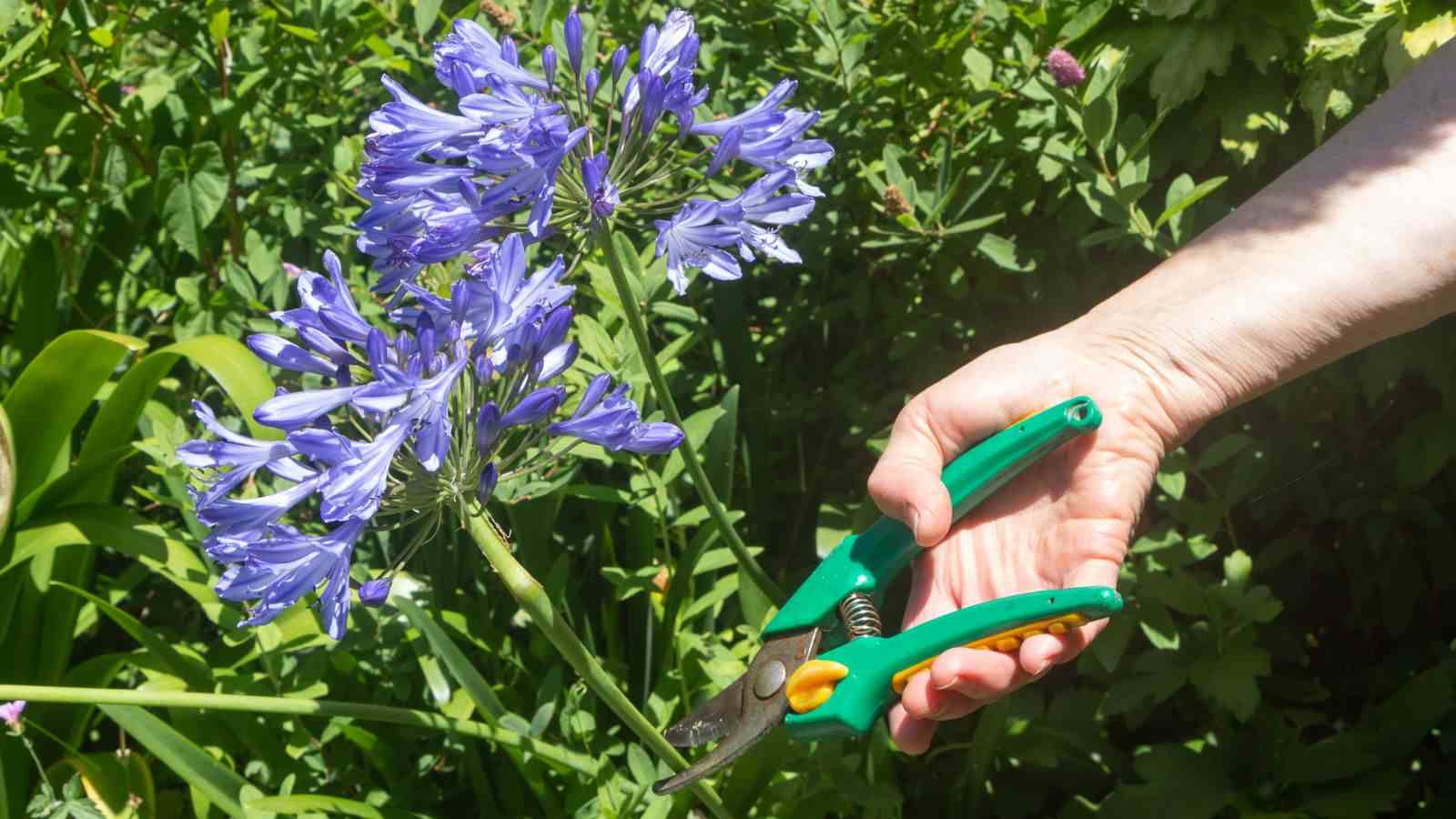
This encourages new improvement and helps protect the plant’s neat look. In case your agapanthuses are in a clump, chances are you’ll as nicely divide the clump using a sharp spade to rejuvenated the vegetation.
Take heed to frost if you happen to occur to reside in a cold native climate; in such circumstances, it’s best to go away the earlier foliage on the plant to supply some security.
Overwintering
Agapanthuses, notably the deciduous varieties, require explicit care via the colder months. Sooner than the first frost items in, within the discount of the foliage and apply a thick layer of mulch, much like compost or sand, over the felsy rhizomes to protect them from the chilly local weather.
For those who occur to reside in a space with notably harsh winters, take note of overwintering your agapanthuses in a darkish place with extreme humidity, much like a cellar or storage.
Make certain that the overwintering website stays cool nonetheless frost-free, and confirm the tuberous roots typically for any indicators of newest improvement.
Types of Agapanthus
- Agapanthus Africanus ‘Arctic Star’: This cultivar is a surprising variety of Agapanthus Africanus, acknowledged for its white flowers that bloom in late summer season season. ‘Arctic Star’ is an evergreen species, with strap-like leaves and felsic
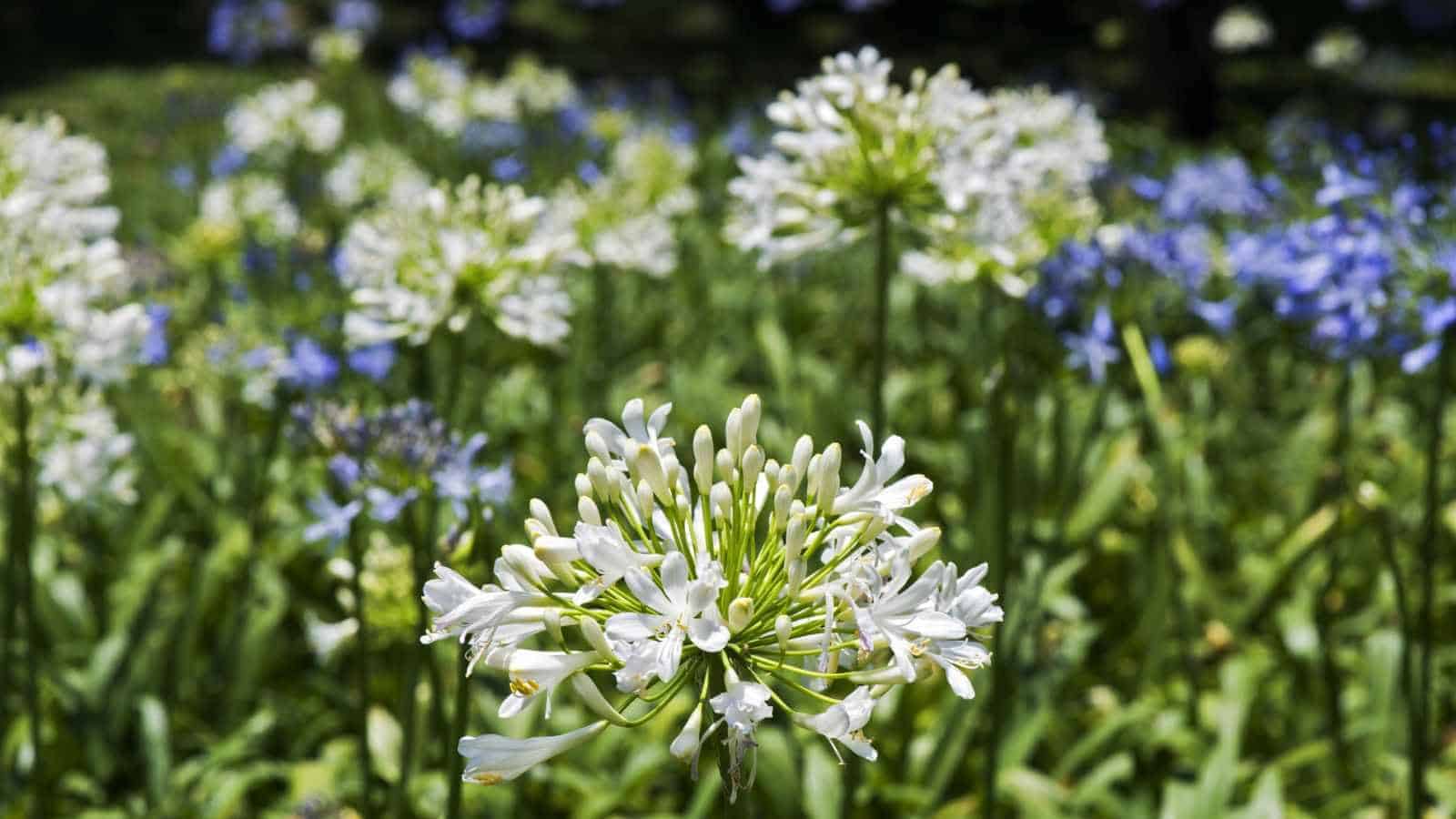
- Agapanthus Africanus ‘Bressingham Blue’: ‘Bressingham Blue’ is an imposing cultivar of Agapanthus Africanus, that features placing blue flowers that sort in clusters atop sturdy flower stems. This plant thrives in full photo voltaic to partial shade and prefers well-drained, acidic soil.
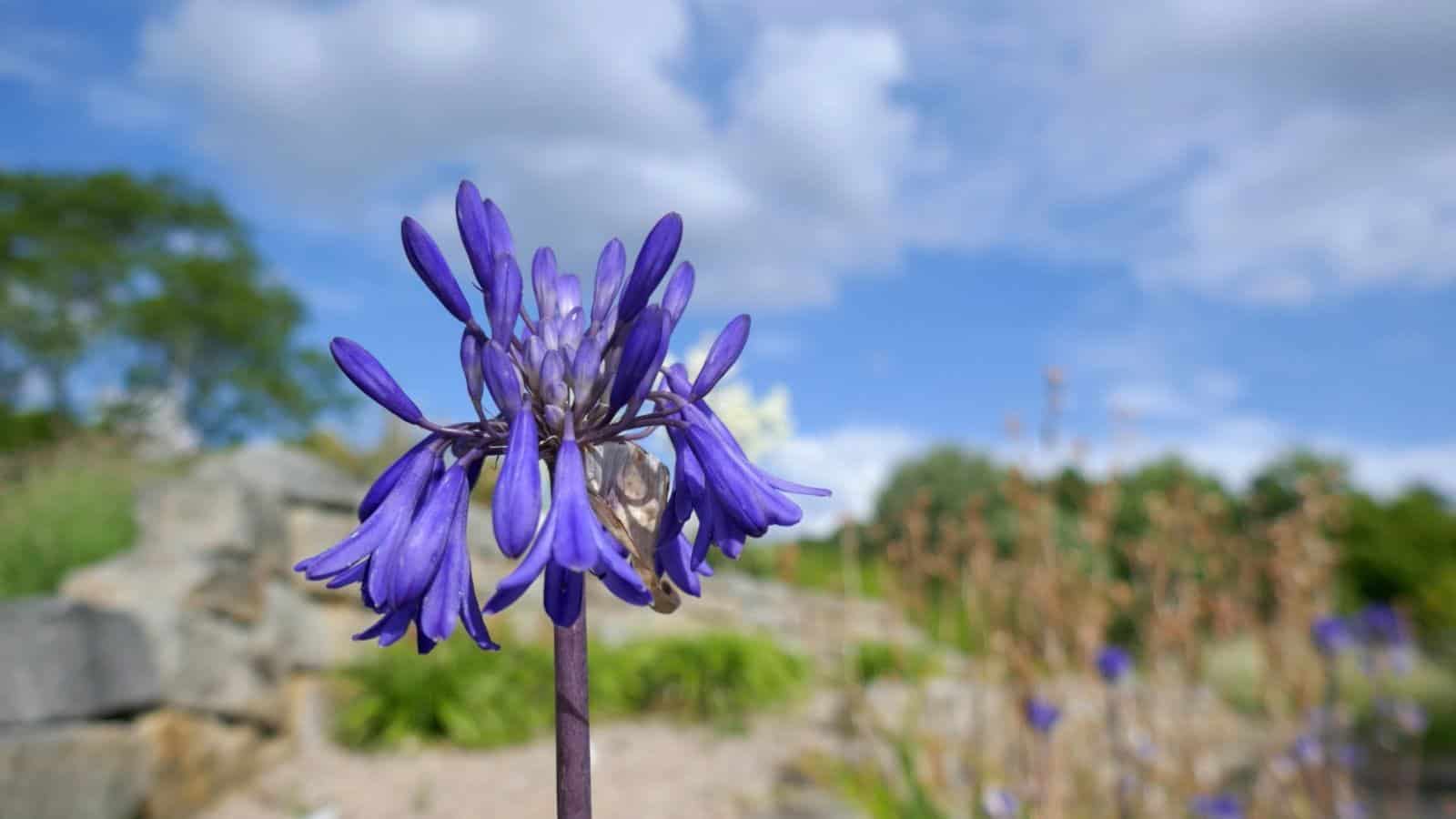
- Agapanthus Praecox Ssp. Orientalis ‘Queen Mum’: ‘Queen Mum’ is a regal deciduous variety of Agapanthus, displaying large, rounded clusters of white flowers. This plant is a favorite amongst gardeners for its lush foliage and tolerance to chilly local weather.
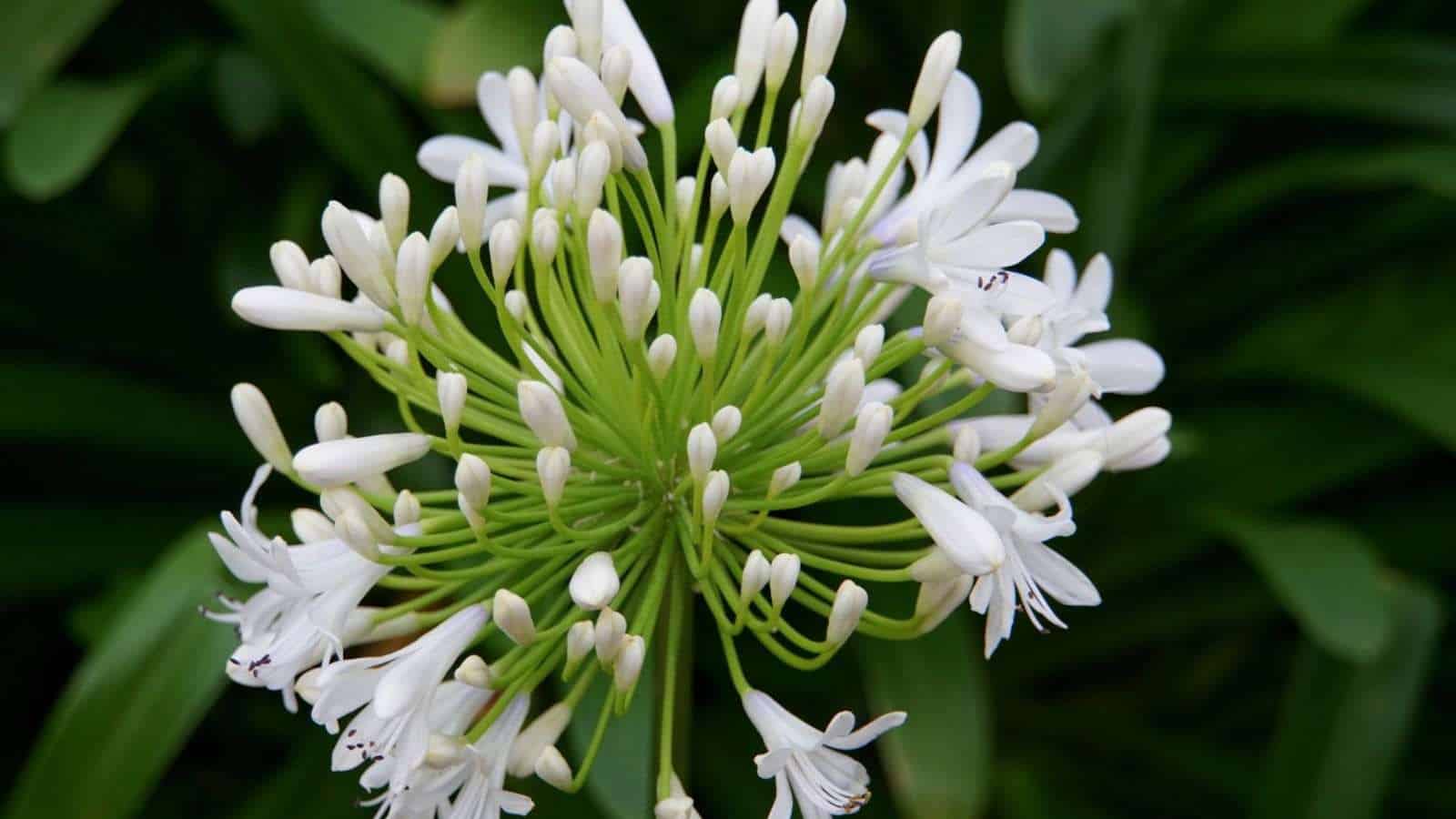
- Agapanthus Campanulatus Var. Patens F2 Hybrid ‘Wise Blue’: ‘Wise Blue’ is an interesting hybrid of Agapanthus Campanulatus, boasting vibrant blue flowers and upright clumps of darkish inexperienced leaves. This plant is an evergreen, thriving in warmth climates and extreme humidity.
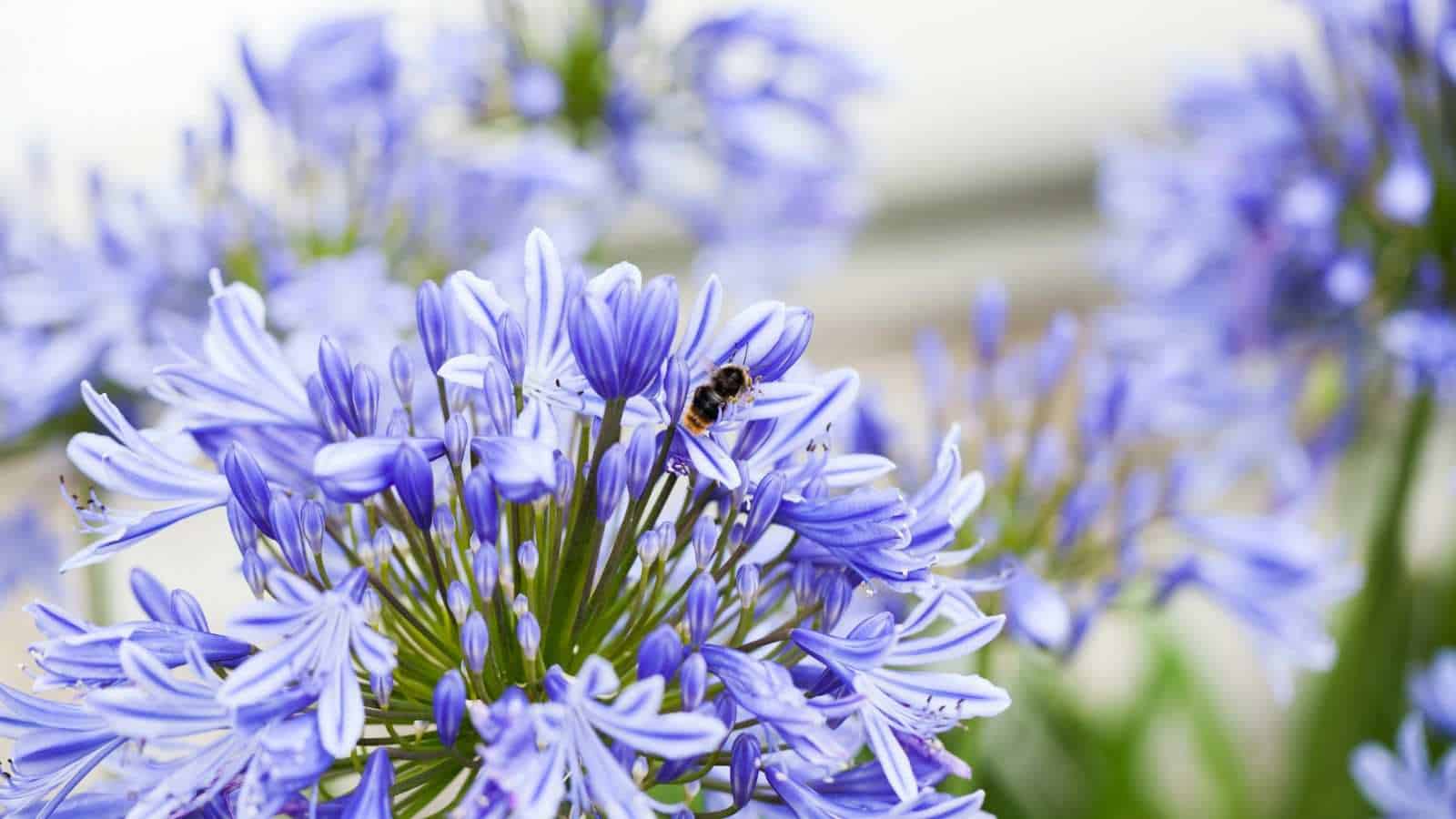
Plant Agapanthus from Seed
Step 1: Choosing the Correct Pot
When planting agapanthuses from seed, it’s important to pick the right pot. A 12-inch pot with drainage holes is nice to supply the plant with ample home and assure appropriate drainage, which is necessary for his or her well-being.
Step 2: Preparing the Soil
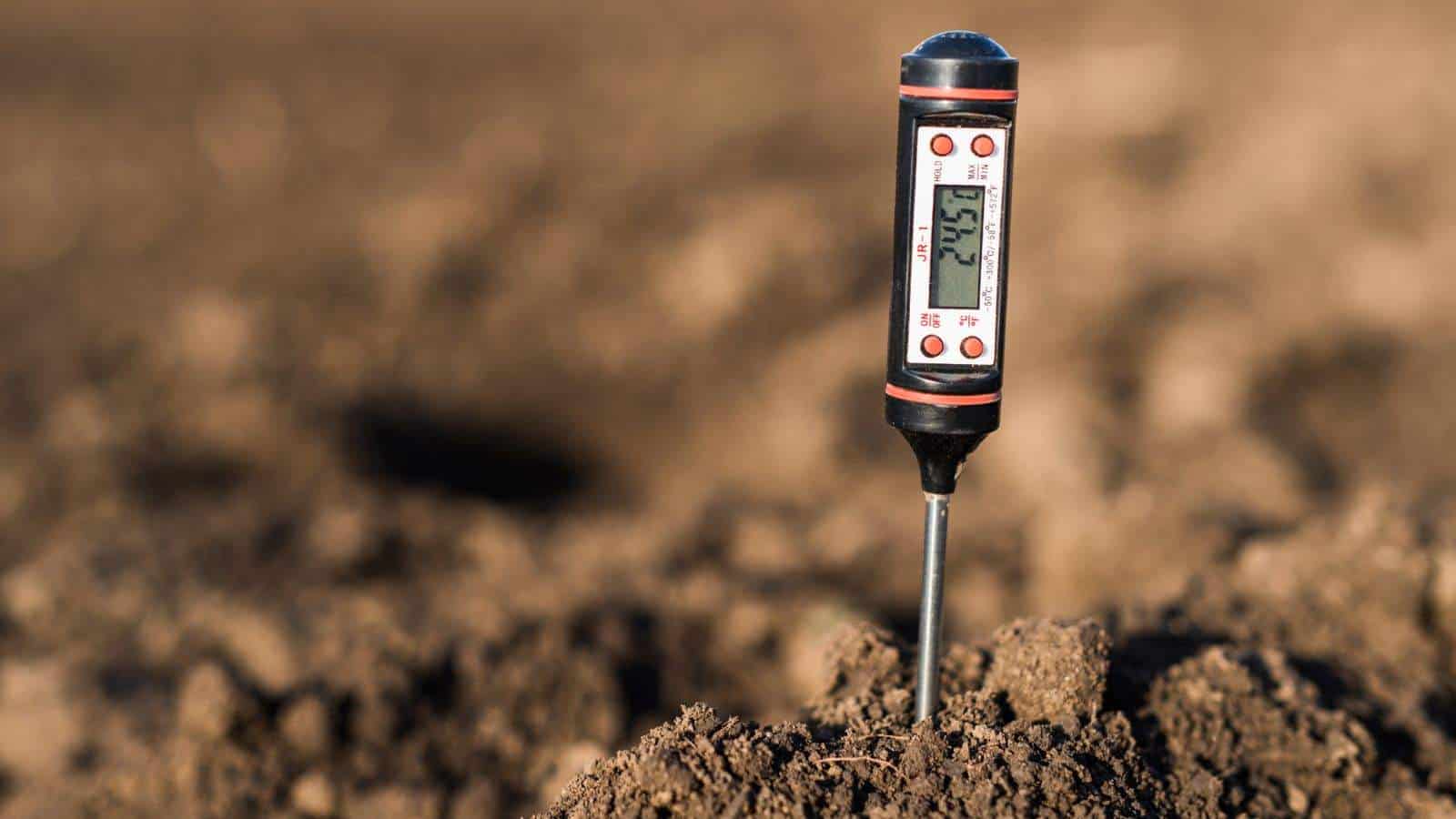
Agapanthuses need well-drained, acidic soil. A combination of compost and sand or a sandy-loam soil is absolutely useful. This isn’t going to solely current good drainage however moreover the necessary nutritional vitamins for the plant’s improvement.
Step 3: Planting the Seeds
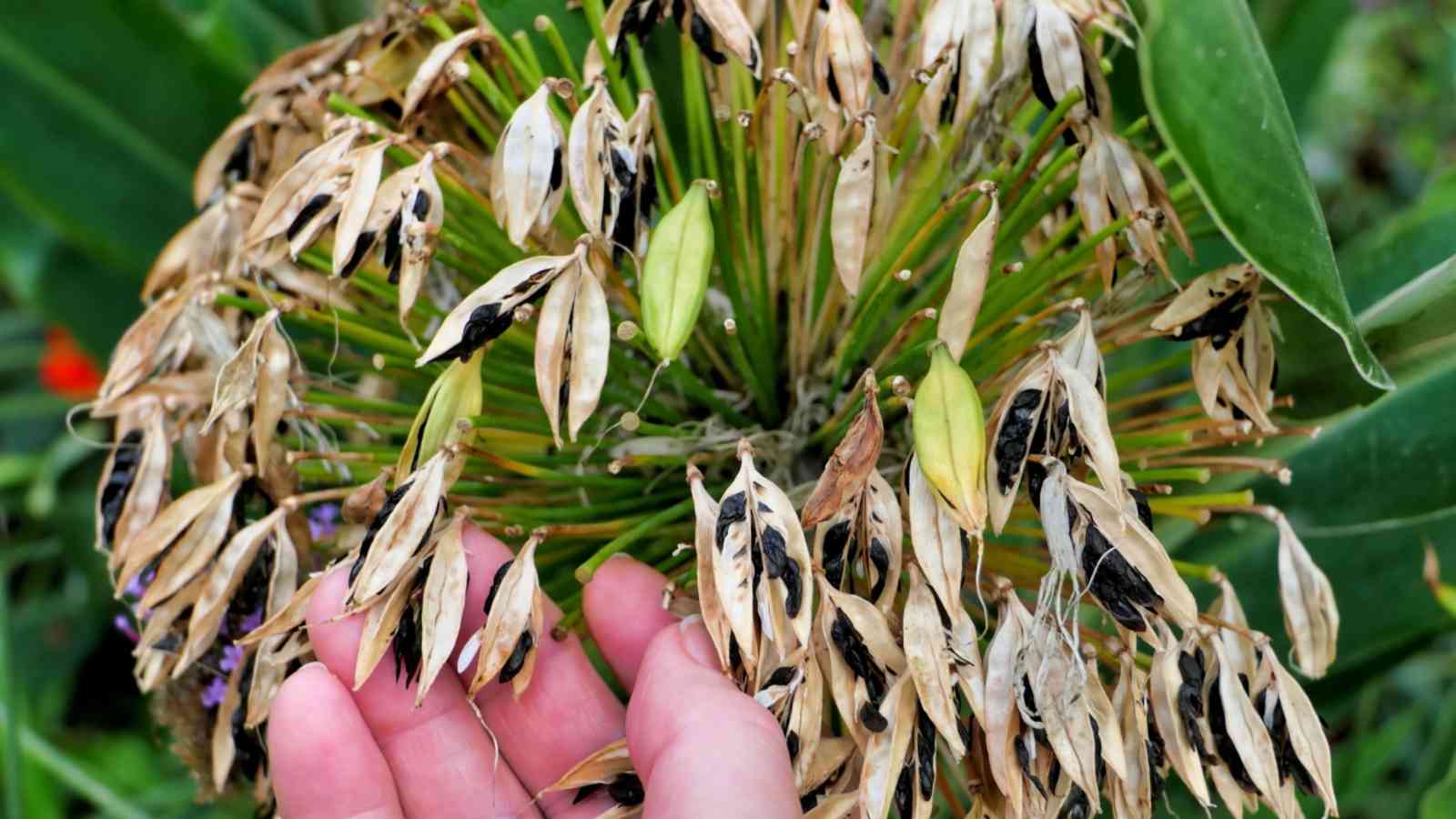
Plant the agapanthuses seeds in a darkish place, as they require darkness for germination. Place the seeds about 1 inch deep throughout the soil and water utterly.
Step 4: Providing the Correct Publicity
Agapanthuses thrive in a sunny location, although they are going to moreover tolerate partial shade. A spot with full photo voltaic or partial shade will ensure that the plant receives ample mild for optimum improvement.
Step 5: Caring for the Seedlings
As quickly because the seeds have germinated, care for the seedlings by ensuring they’ve ample water, notably in extreme humidity or warmth climates. Protect an eye fixed mounted out for model new improvement, which signifies the plant’s nicely being and vigor.
Step 6: Transferring to a Larger Pot
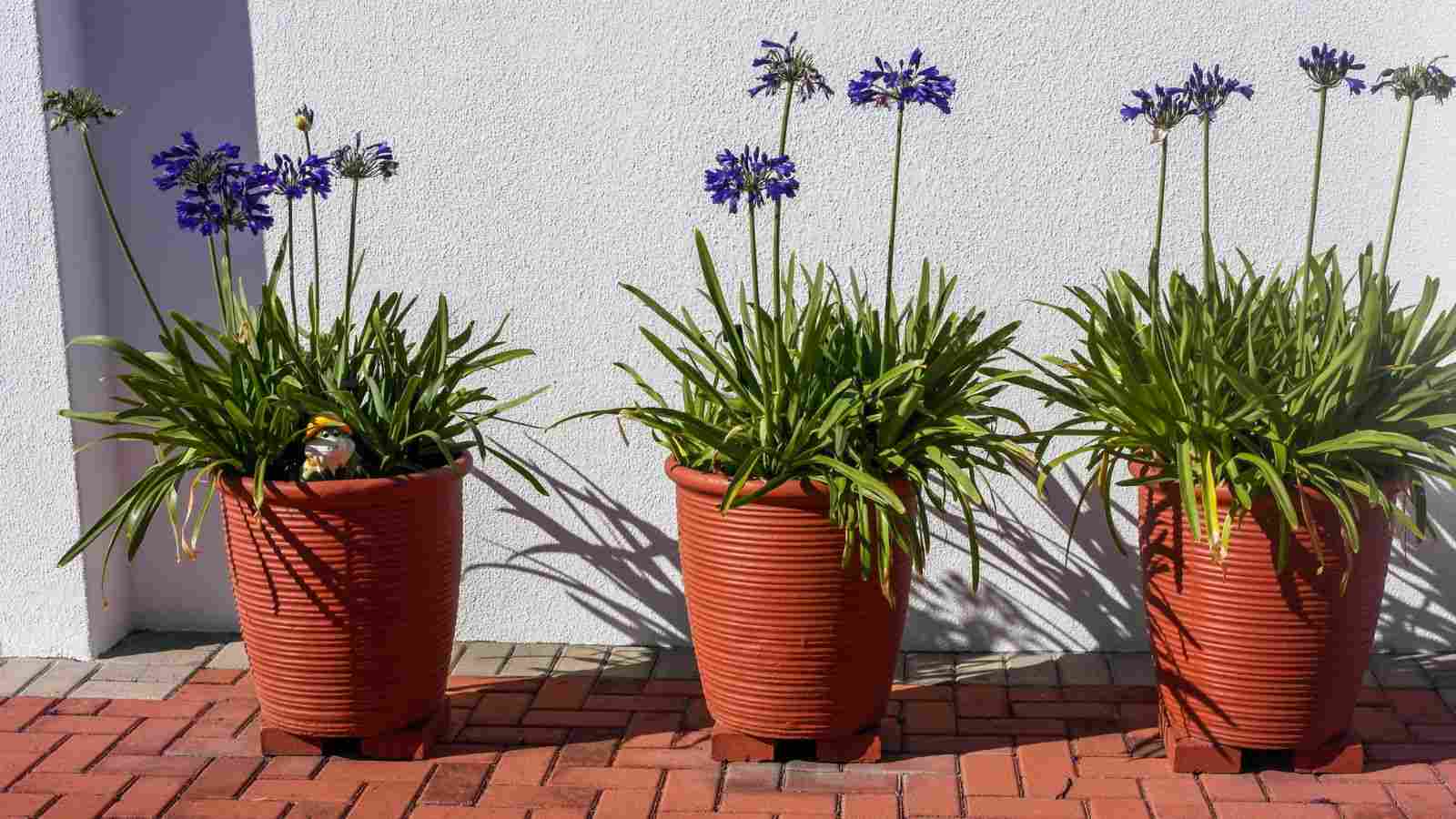
As a result of the agapanthuses develop, it is potential you may have to change them to an even bigger pot to accommodate their rising root system. That may be very true for the evergreen varieties, which type clumps of tuberous roots over time.
Propagate Agapanthus
Step 1: Put collectively the Plant
Start by selecting a healthful agapanthu plant with sturdy roots and new improvement. It is best to propagate agapanthu on the end of the rising season, sooner than the first frost.
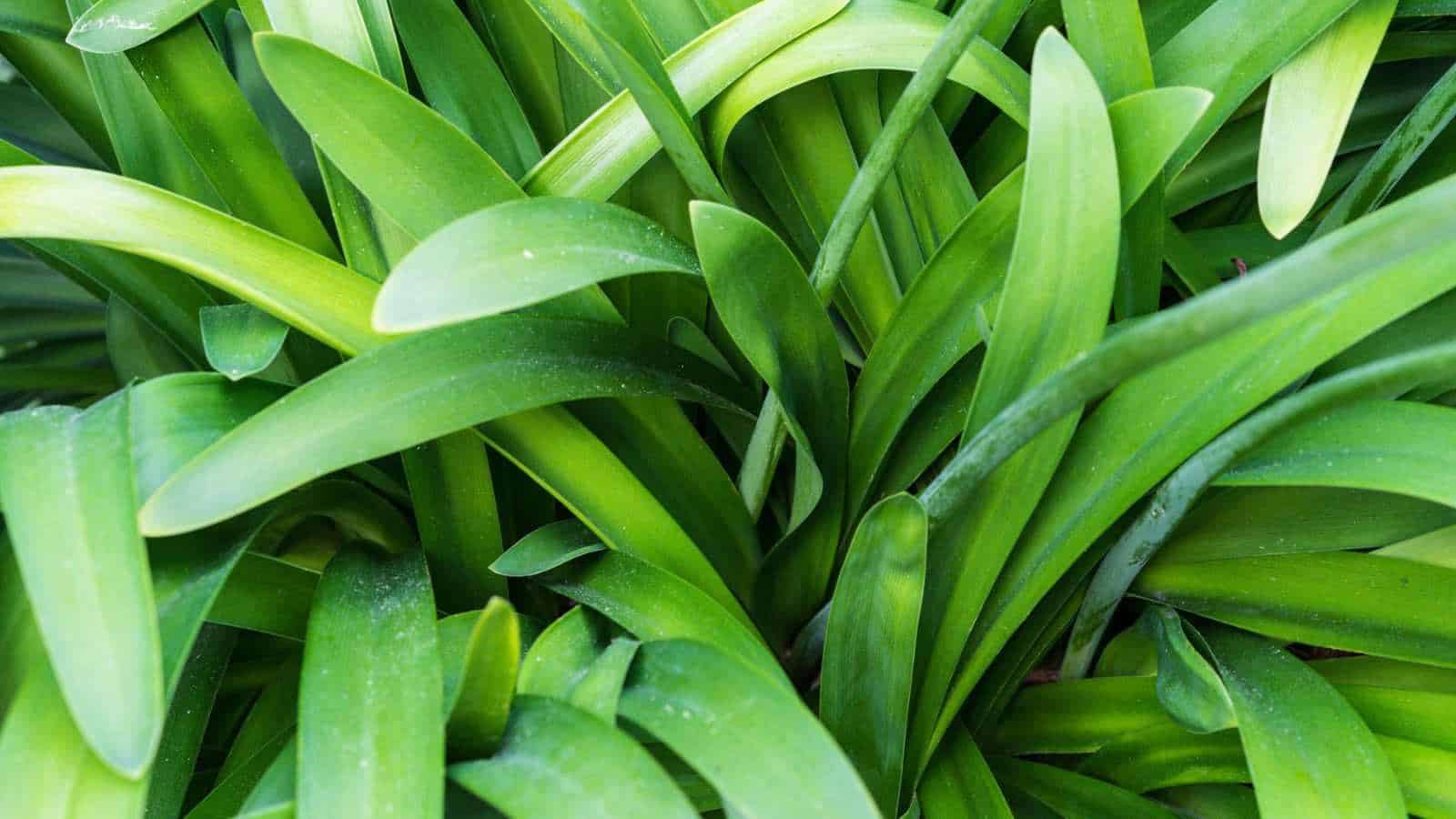
Using a sharp, sterilized knife, rigorously separate the chosen plant from the first clump. Make sure that to embody a portion of the tuberous roots with each division.
Step 2: Plant the Divisions
Put collectively a well-drained potting mix using a mixture of sand, compost, and acidic soil. Fill a 12-inch pot with the combo, leaving ample home for the agapanthu division.
Plant the division throughout the pot, ensuring that the roots are unfold out and coated with the soil mix. Water the plant utterly to settle the soil throughout the roots.
Step 3: Current the Correct Setting
Place the potted agapanthu in a darkish place for only a few days to encourage the occasion of newest roots. After this preliminary interval, switch the pot to a sunny location with partial shade, notably in warmth climates.
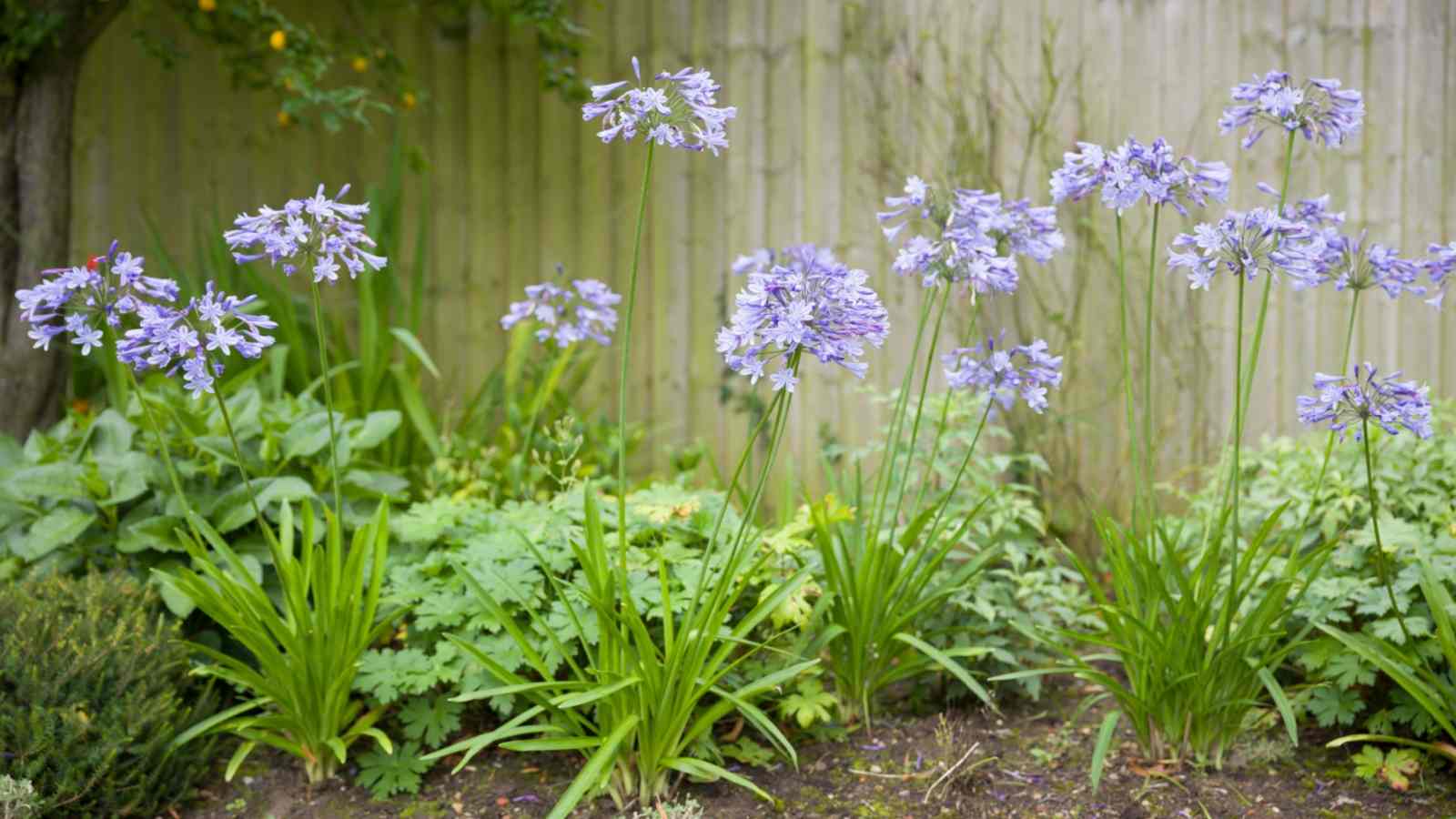
Agapanthu thrives in extreme humidity and well-drained soil, so it’s best to positively current these conditions. Protect the soil persistently moist nonetheless not waterlogged.
Step 4: Take care of the New Vegetation
Because the model new agapanthus vegetation arrange, they’re going to produce new foliage and finally blooms. Take heed to the publicity to chilly local weather and frost, notably for deciduous varieties.
Mulch throughout the bottom of the vegetation to protect the fussy rhizomes from frost. With appropriate care, your agapanthus divisions will flip into sturdy, blooming vegetation, in a position to brighten your yard with their beautiful flowers.
Pot or Repot Agapanthus
Step 1: Select the Correct Pot and Soil
To pot or repot an Agapanthus, you’ll desire a pot with drainage holes. A 12-inch pot is generally ample for a single plant, nonetheless if you happen to occur to’re working with a dwarf or container choice, a smaller pot will do.
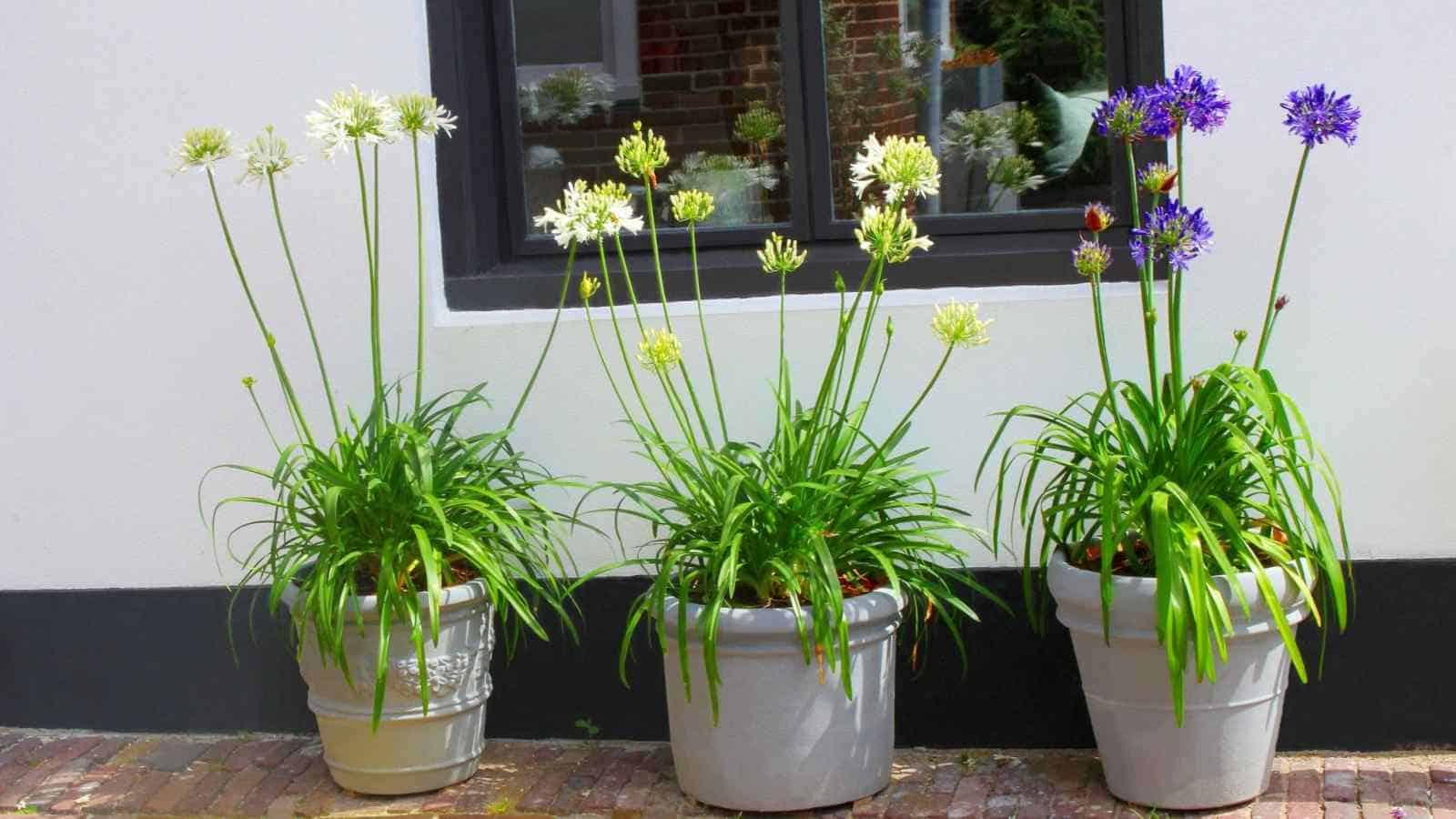
Agapanthuses thrive in well-drained soil, ideally a sandy loam enriched with compost. They like acidic soil, so together with some sand and mulch to your compost can also assist get hold of the right pH diploma.
Step 2: Put collectively the Plant
Agapanthuses might be grown from seed, nonetheless the most typical strategy of propagation is from tuberous roots or fleshy rhizomes. For those who occur to’re repotting an current plant, that’s the time to scrupulously take away it from its current pot, being acutely aware to not hurt the roots or new improvement.
Step 3: Plant the Agapanthus
Place the Agapanthu throughout the center of the pot and fill in spherical it collectively together with your soil mixture. The best of the tuberous roots or fleshy rhizomes should be slightly below the soil ground. Water utterly to settle the soil throughout the roots.
Frequent Pests and Plant Illnesses for Agapanthus
Slugs and Snails
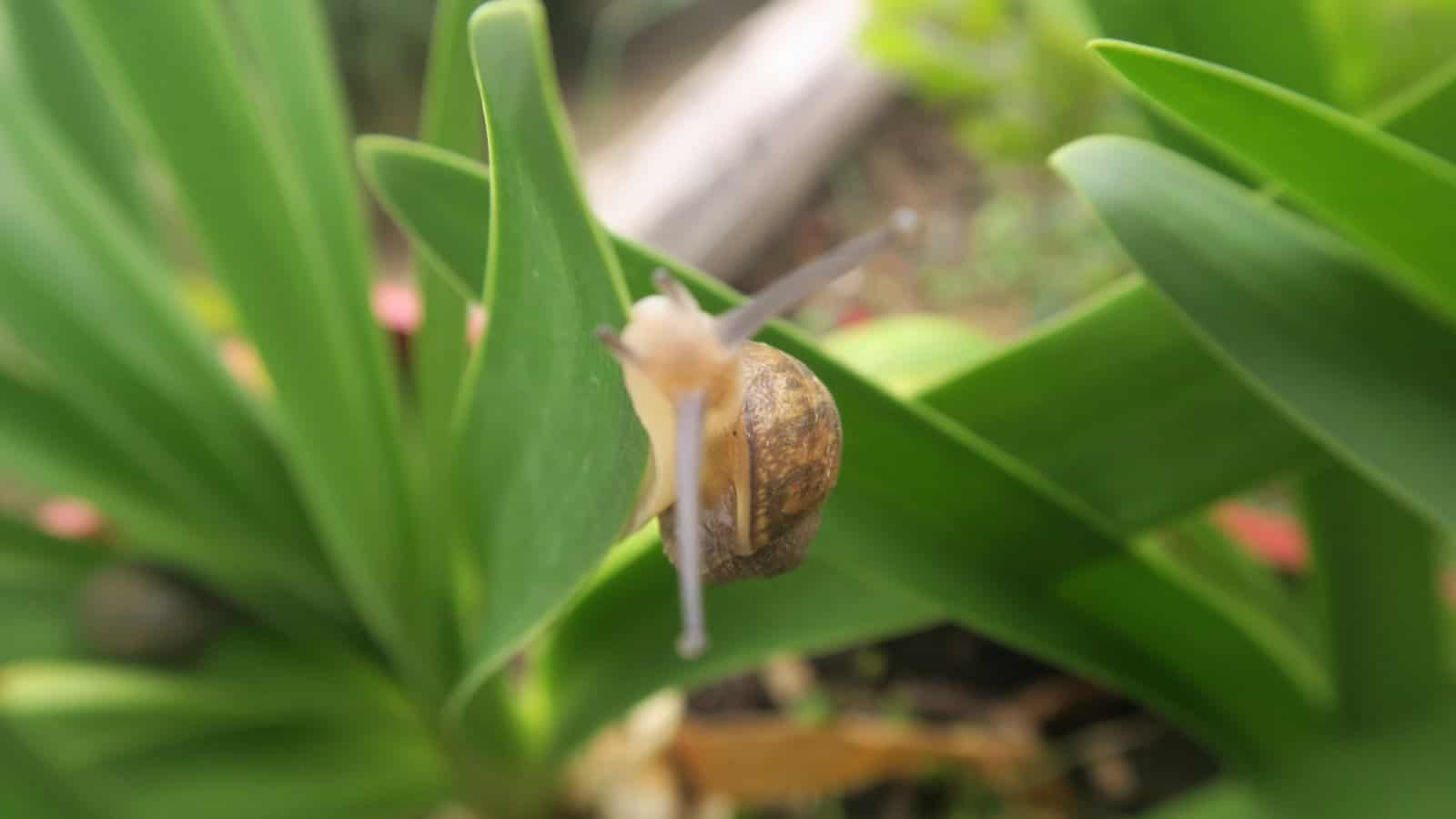
Slugs and snails are widespread pests that will set off hurt to agapanthuses, notably to their strap-like leaves and blooms.
They’re most vigorous all through extreme humidity and in darkish places, so it’s necessary to take care of the yard clear and take away any particles which is able to current shelter for these pests.
Fungal Illnesses
Agapanthuses, notably these in warmth climates, are weak to quite a few fungal sicknesses, along with leaf spot and root rot.
These sicknesses are generally introduced on by overwatering or poor drainage, so it’s important to make it possible for the vegetation are in well-drained soil and to utilize mulch or compost to boost soil building.
Agapanthuses are usually hardy vegetation, nonetheless they’re typically affected by certain pests and sicknesses if not appropriately cared for.
Frequent Plant Points and Choices for Agapanthus
Brown Ideas
One widespread draw back seen in agapanthuses is brown suggestions on their strap-like leaves. That’s normally a sign of overexposure to full photo voltaic, notably in warmth climates, or a shortage of extreme humidity.
To rectify this, take note of shifting the plant to {{a partially}} shaded location, notably via the most well liked part of the day. You can also enhance the humidity throughout the plant by misting the leaves typically or inserting a tray of water and pebbles beneath the pot.
Yellowing Leaves
Yellowing leaves in agapanthuses are generally a sign of overwatering or poor drainage. In case your plant’s leaves are turning yellow, confirm the pot for proper drainage holes and regulate your watering schedule.
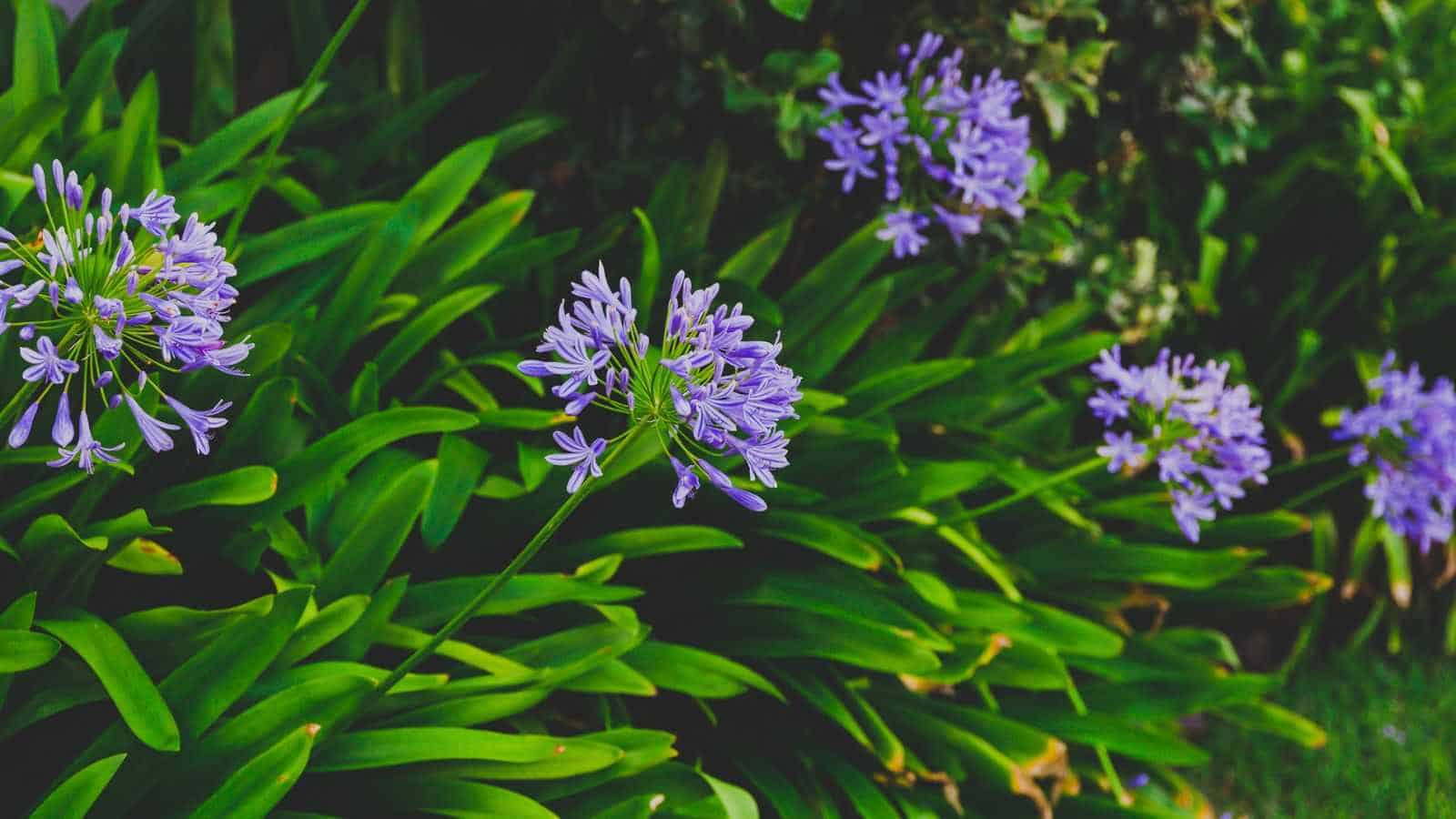
Agapanthuses need well-drained soil, so make sure the potting mix won’t be waterlogged. If the plant is in a pot with out appropriate drainage, take note of repotting it proper right into a container with drainage holes and a mix of compost and sand for improved drainage.
Lack of Blooms
In case your agapanthuses normally will not be producing their gorgeous flower clusters, it could very nicely be as a consequence of some parts. These vegetation require a interval of chilly local weather, or frost, to set off the model new improvement that may end up in blooms.
For those who occur to reside in a space with out naturally occurring frost, you presumably can mimic this by inserting the plant in a darkish place, like a storage or shed, on the end of the rising season for only a few weeks.
Moreover, agapanthuses desire a sunny location for optimum blooming, so make sure they’re getting ample publicity to sunlight. Plus, assure they are not being over-fertilized, as it will end in further foliage improvement on the expense of blooms.
Totally different Guides from Planet Pure:
Lily of the Nile: A Data to Planting and Caring
Water Lily: Plant, Develop, and Take care of Water Lilies
[ad_2]
Provide hyperlink
